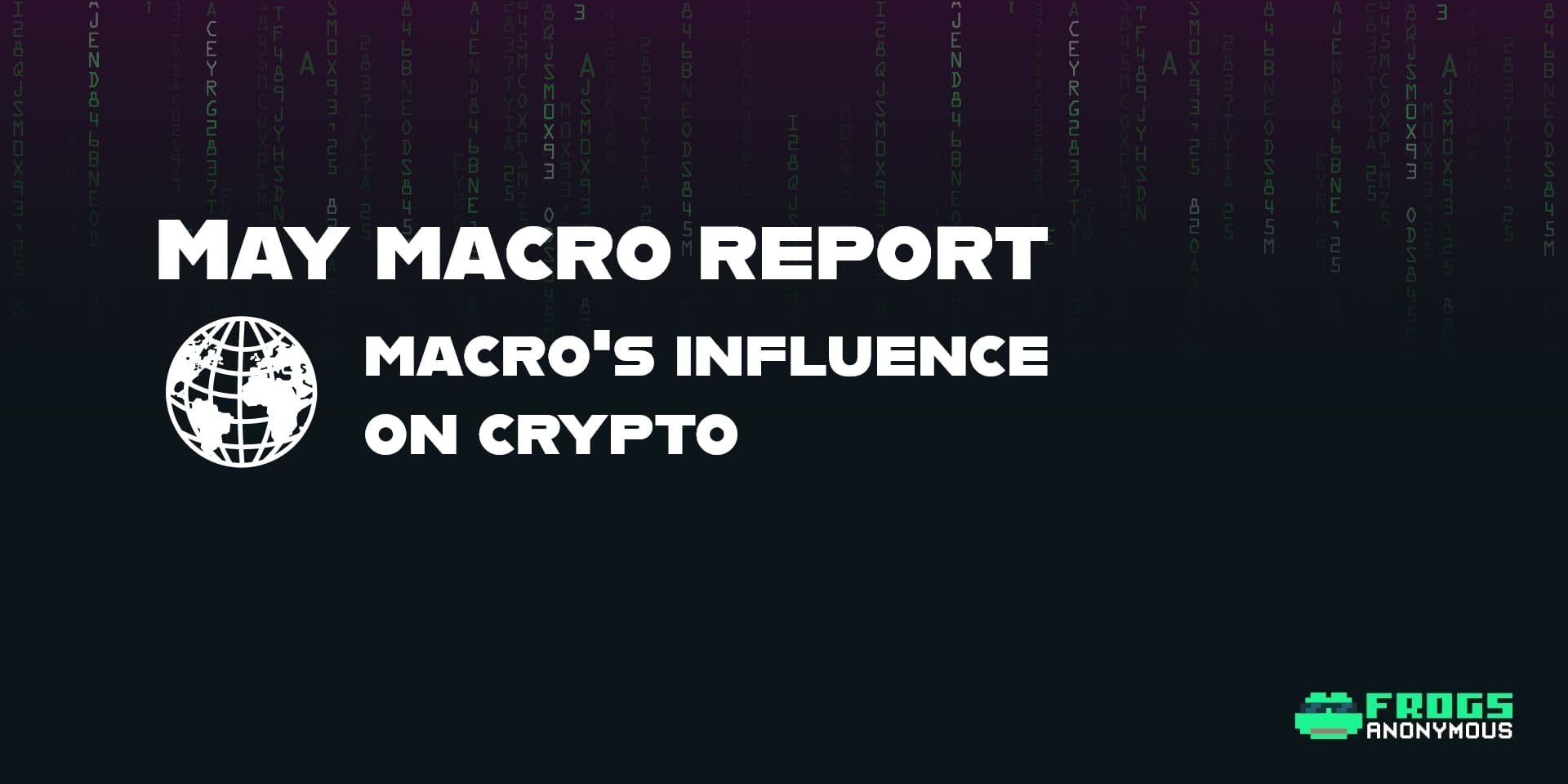May Macro Report: Macro's Influence on Crypto
This month has brought a torrent of new data, and it’s hinting at a change in consumer habits. First, let's take a look at housing data.

1

13

2

3

4
The Great Rotation Unfolds:
I’d like to take the moment to dub this phenomenon “The Great Rotation.” This is the first time in 40 years where we have seen a massive rotation out of growth and into value. Over the past 20 years alone, there has been a debate in the asset management community over whether value investing is dead, given the meager returns it had seen relative to growth (192% vs 415% respectively over the past 20 years).
When we take a step back from this, we can surmise two major trends forming: A rotation from heavy discretionary spending to staple spending is occurring. The difference between discretionary and staple spending is similar to the difference between ordering an UberEats instead of cooking. You could spend 30 dollars on a meal from McDonalds via UberEats, OR you could use that same 30 dollars to buy all the ingredients for the same meal and have leftovers for the next 2-3 days. Both get you fed, but one goes a bit farther if you are ballin’ on a budget.
The appetite for leverage-heavy assets (real estate, tech, etc) is declining as the threat of higher interest rates and basic living costs continue to rise. In other words, people don't have the additional capital to spend on random stuff because they already spend enough just trying to survive.
We can confirm this with how Wall Street has also been rotating industries. Below is a heat map showing industry performance in ETFs over the past six months.

5

6
Implications on Crypto’s Future lies with its HODLers
With the collapse of UST, we have seen volumes collapse across the board. Unsurprisingly, the TVL in the Defi space dropped nearly in half according to DefiLlama.

7
The UST scare definitely spooked investors, however it looks as though there is a bottom forming in the space among the blue-chip defi protocols like AAVE and Compound. One metric I employ to measure market risk appetite is the TVL vs Borrower Volume. In the traditional world, excessive borrowing is usually done towards market tops as individuals leverage their recent comeuppance in their portfolios. We can see below that especially after the UST debacle, borrowing volume has declined massively, meanwhile the TVL seems to be finding somewhat of a bottom.

8
Is Anyone Accumulating?
With borrowing cooling off and prices correcting lower, HODLers are able to acquire more crypto (specifically BTC) per dollar. This leads us to investigate the domain of supply dynamics.
First up, we have the HODL waves, and more specifically, the difference between BTC and DOGE waves. I use these two as they represent two sides of a similar coin. One steeped in financial promise as a digital gold, the other a satirical jab at the ethos of crypto. Notably, across both assets we can see that holders in the short term (< 12 months) have been jumping ship.
From my last report which you can see here: A massive part of this was due to short term holders going underwater with the decline in asset prices. But what is more revealing is how quickly the meme-era Doge coin was dropped relative to BTC.
To better explain the charts on the following page, hodlers are classified by their holding period and shift into older waves according to their original purchase. Likewise, they drop off if they sell.

9

10

11

12
High scores during a bull run (blue) - these usually occur near tops as the smart money distributes their balance but are matched with an even larger influx of less experienced new buyers.
High scores during bearish trends (green) - these generally trigger after very significant corrections in price, as investor psychology shifts from uncertainty to value accumulation. A notable exception is the post ATH period of Dec 2021 where 'the dip' turned out to not be THE dip, and many of these coins were redistributed lower at a loss.
All in all, it’s fair to say that accumulation is occurring, primarily amongst little guys and mega-whales that have been in the game prior to 2021. This adds a massive primary backstop to BTC’s price as it continues to decline in this risk-off environment, and hints that the future for crypto is truly in the hands of the HODLRs.
As the retail sentiment from non-crypto natives continues to die down, it allows these new adopters to digest the technology of the new asset class rather than chase the “easy” gains shilled by their favorite YouTube pump and dumper. Ultimately this is boolish and suggests that we are closing in on a bottom.
Published on Jun 07 2022
Written By:
blk_7wan
@blk_7wan